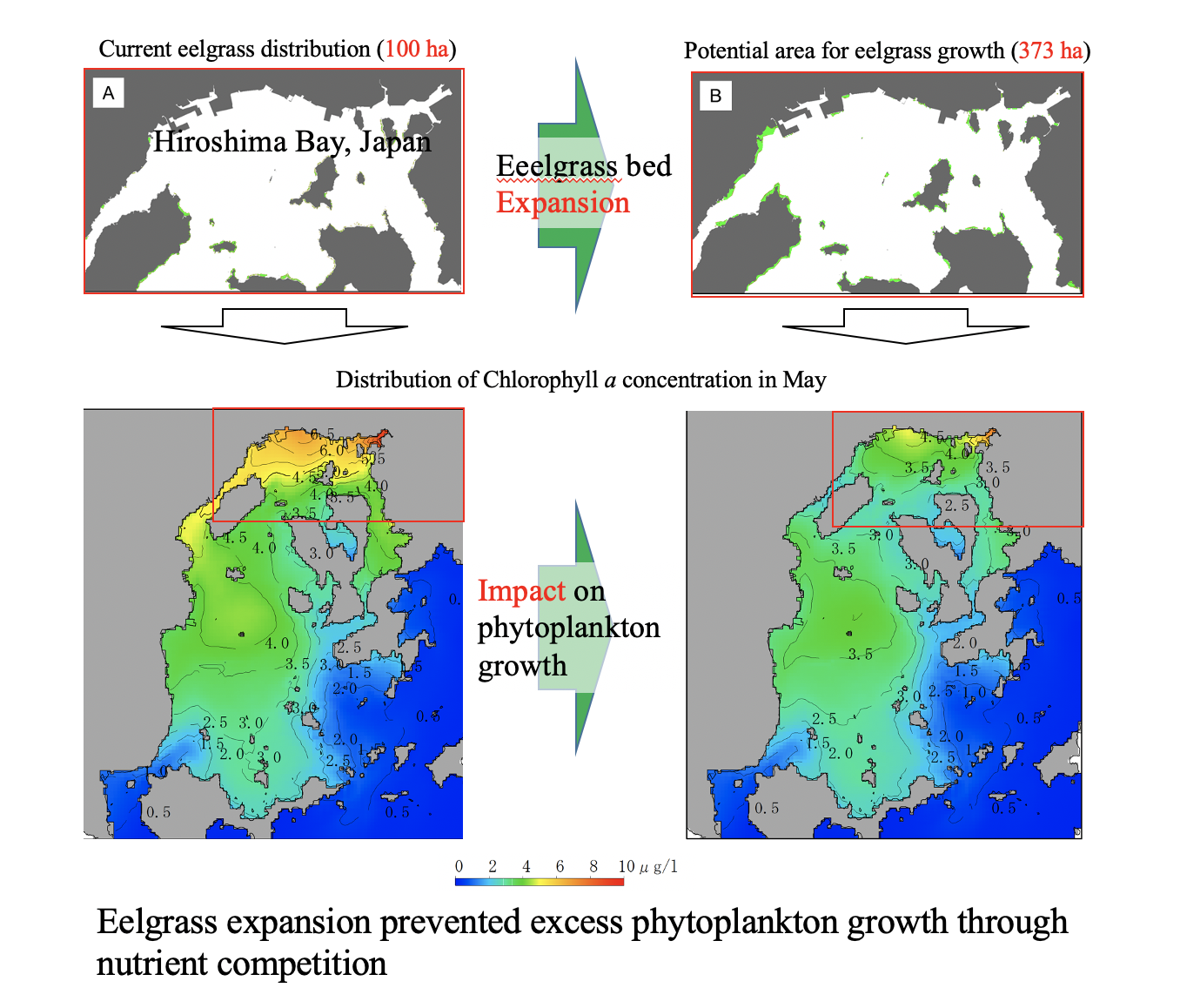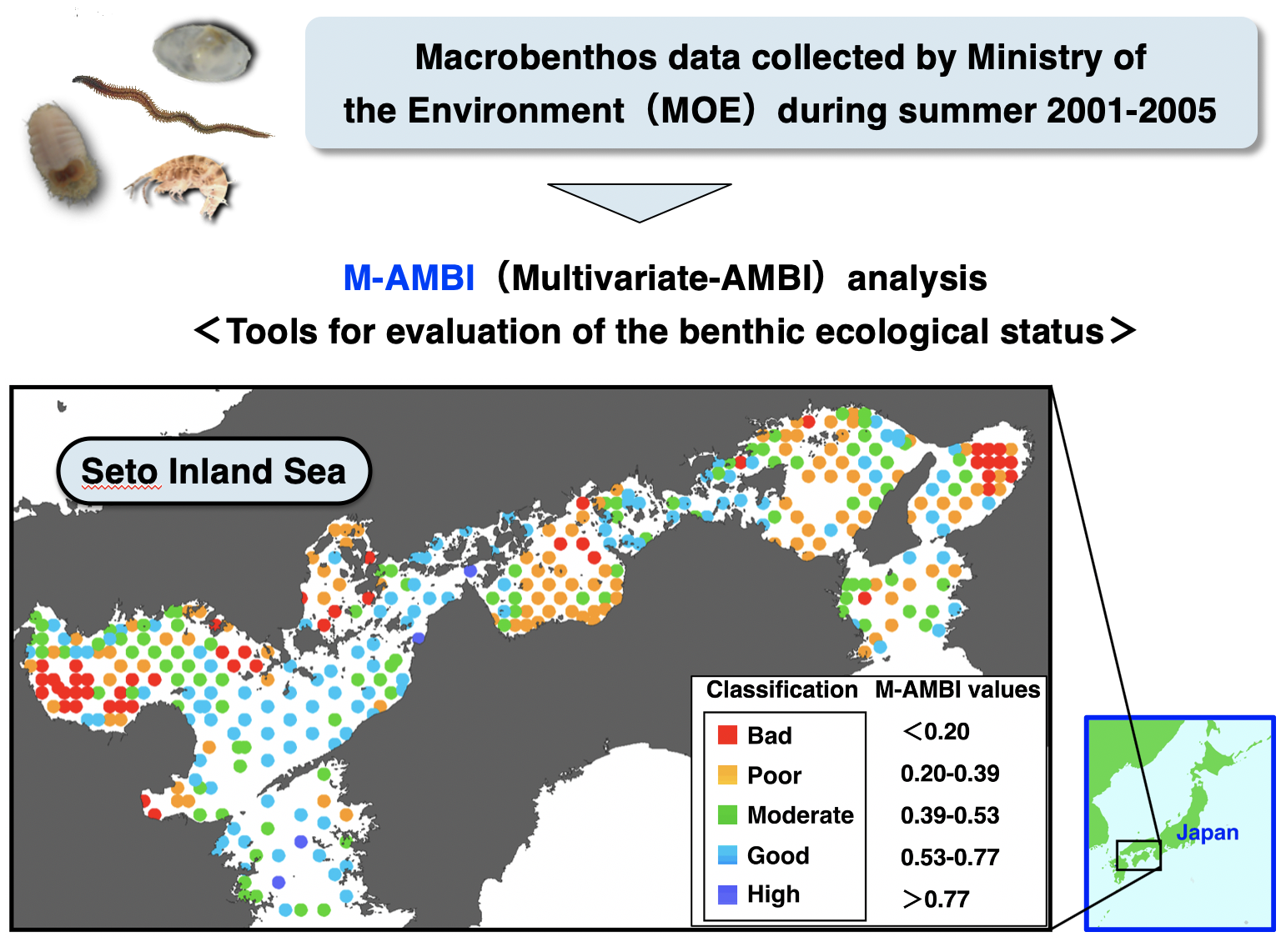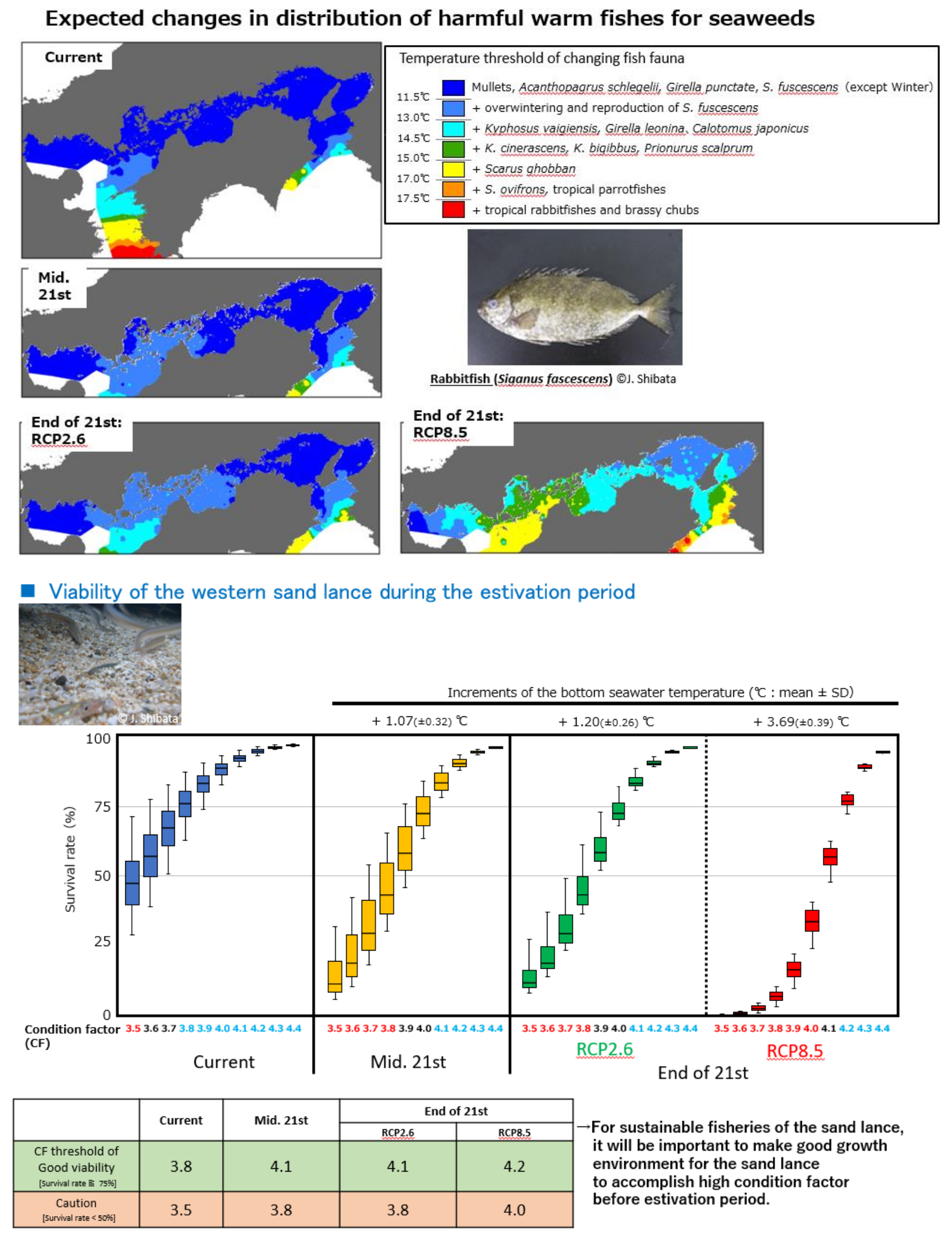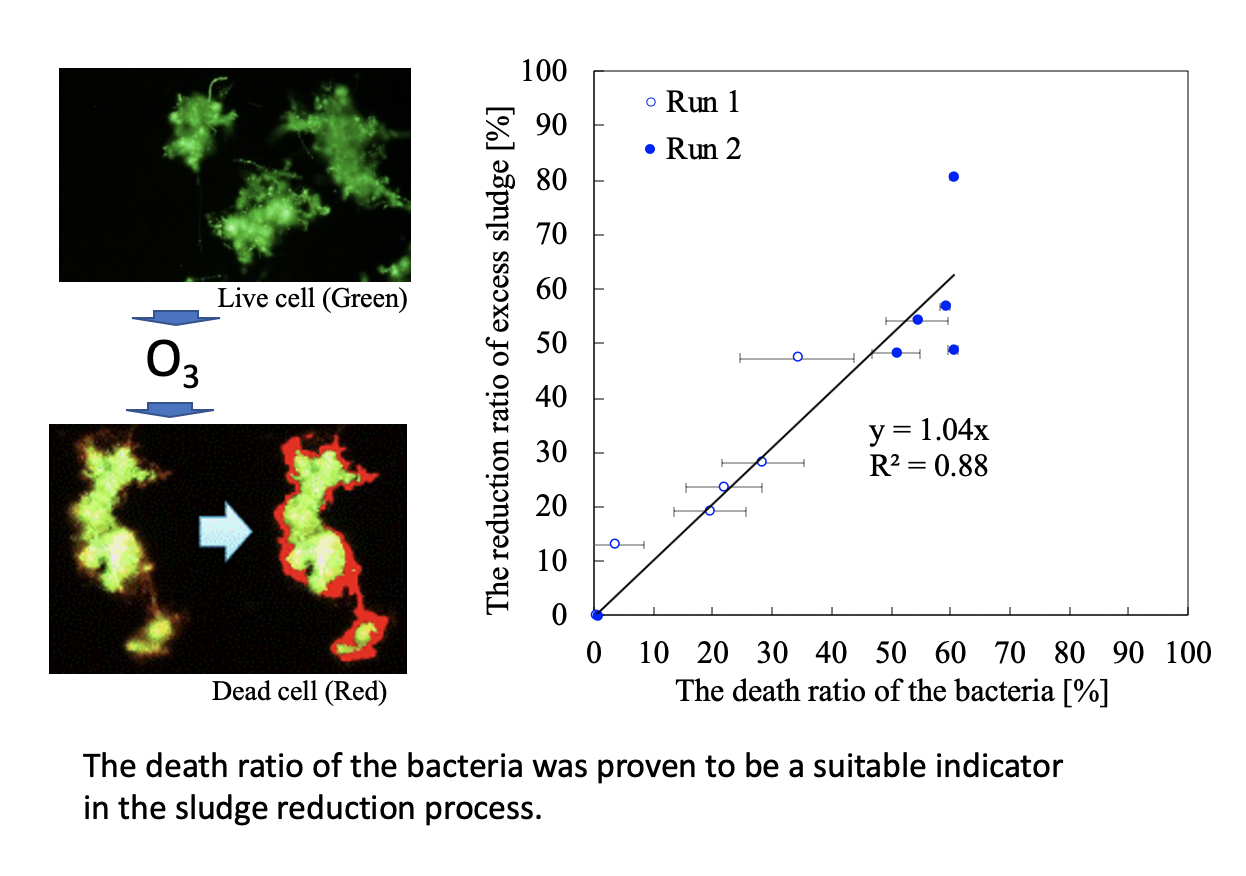

Graduate School of Advanced Science and Engineering


● Impact of eelgrass bed recovery and expansion on phytoplankton growth through nutrient competition
Eelgrass (Zostera marina L.) is widespread in temperate coastal areas in Japan and other countries. Eelgrass beds take in much nutrients from the water and therefore will be potential to prevent excessive phytoplankton growth in eutrophic coastal waters through the reduction of available nutrients. Natural recovery of eelgrass beds through the decline in chlorophyll a (Chl.a) concentration after eutrophication is expected. The recovery of eelgrass bed would enhance further reduction of Chl.a concentration through nutrient competition.
The objectives of this study were to determine the maximum possible water clarity that could be reached after reducing anthropogenic nutrient loading and to evaluate the impact of eelgrass bed recovery and expansion on phytoplankton growth in the eutrophic northern Hiroshima Bay. We found that phytoplankton did not control water clarity in the study area, which was instead controlled by background factors like suspended particle matters. Therefore, improvements in water clarity would not be expected after reducing anthropogenic nutrient loading. The potential area as a habitat of Zostera marina with more than 20% surface irradiance was 373 ha and Z. marina existed in 27% of it (100 ha). The maximum further recovery of eelgrass by Secchi depth improvements was estimated at 36 ha. The impact of eelgrass recovery and expansion on phytoplankton growth from May to September was evaluated by a mathematical model under two scenarios: the current eelgrass distribution (100 ha) and potential maximum eelgrass distribution (373 ha). A Chl.a decrease of 1.0-3.0 μg/L from 4.0-7.0 μg/L was achieved in the area from May to July, but the improvement decreased with time. These evaluation methods and findings could help to have a better understanding of the nutrient management in enclosed seas.

● Benthic quality assessment using M-AMBI in the Seto Inland Sea, Japan
Benthic invertebrates that inhabit the sea bottom respond to anthropogenic and natural stresses, and are good indicators for assessing the benthic ecological status. This study evaluated the ecosystem health of the Seto Inland Sea based on the multivariate AZTI Marine Biotic Index (M-AMBI)(Muxika et al. 2007), being its first application in a Japanese coastal sea with numerous endemic species.The M-AMBI values were significantly correlated with physico-chemical variables including water content, TOC content, sulfide content, and ORP. The M-AMBI would be a useful biotic index in Japanese coasts due to the representation of the comprehensive sediment quality.

● Forecasting of the impact of climate change on the fisheries in the Seto Inland Sea
Due to climate change, the seawater temperature is going on rising worldwide. In the Seto Inland Sea, which is a large enclosed marine coastal area and very important fisheries ground in Japan, it has been confirmed that the seawater temperature rose at an annual average value of 0.7-0.8 °C for 30 years from the 1970s to the 2000s. Based on the reports of the Intergovernmental Panel on Climate Change (IPCC), the latest forecasting data of the future water temperature in the Seto Inland Sea show that the annual average sea surface temperature will rise by 0.5 to 1.3 °C until the middle of the 21st century. At the end of the 21st century, the annual average sea surface temperature will rise by 0.9 to 1.7 °C on the scenario with stringent mitigation efforts (RCP2.6) and is expected to rise by 3.4 to 4.1 °C on the scenario with massive emissions of greenhouse gas (RCP8.5). We have been working on assessments of how such a rise in seawater temperature could affect the fishing environment in the Seto Inland Sea in some aspects, (1) Changes in the appropriate period for cultivating oysters, nori seaweeds, and wakame seaweeds, which are the main aquaculture targets in the Seto Inland Sea and are known to be affected by seawater temperature. (2) Expansion of distribution of harmful warm fishes for seaweeds, such as rabbitfish, brassy chub, and parrotfish. (3) Impact on the viability and life history of the western sand lance, which is a famous spring traditional food around the Seto Inland Sea region. In these works, we investigate with literature surveys, laboratory experiments, field observations including the latest method of the environmental DNA meta-barcoding, and analyze data by using model simulation. The outcomes are opened as the results of the Regional Adaptation Consortium Project for Climate Change by the Ministry of the Environment and will be used as the fundamental knowledge to examine how our future lives should adapt to climate change.

● The dead cell ratio of bacteria in sludge flocs as an indicator of sludge reduction in sludge ozone process
We developed a quantitative analytical method to determine the dead cell ratio of bacteria (death ratio) in sludge for evaluating and determining a sufficient amount of ozone for the sludge ozone process. We used the method with SYTO9 and propidium iodide of fluorescent dyes as staining agents for live and dead cells, respectively. We could successfully predict the reduction ratio of the excess sludge in the sludge ozone process with different ozone dosages using the death ratio developed in this study. The death ratio was proven to be a suitable indicator for excess sludge reduction.